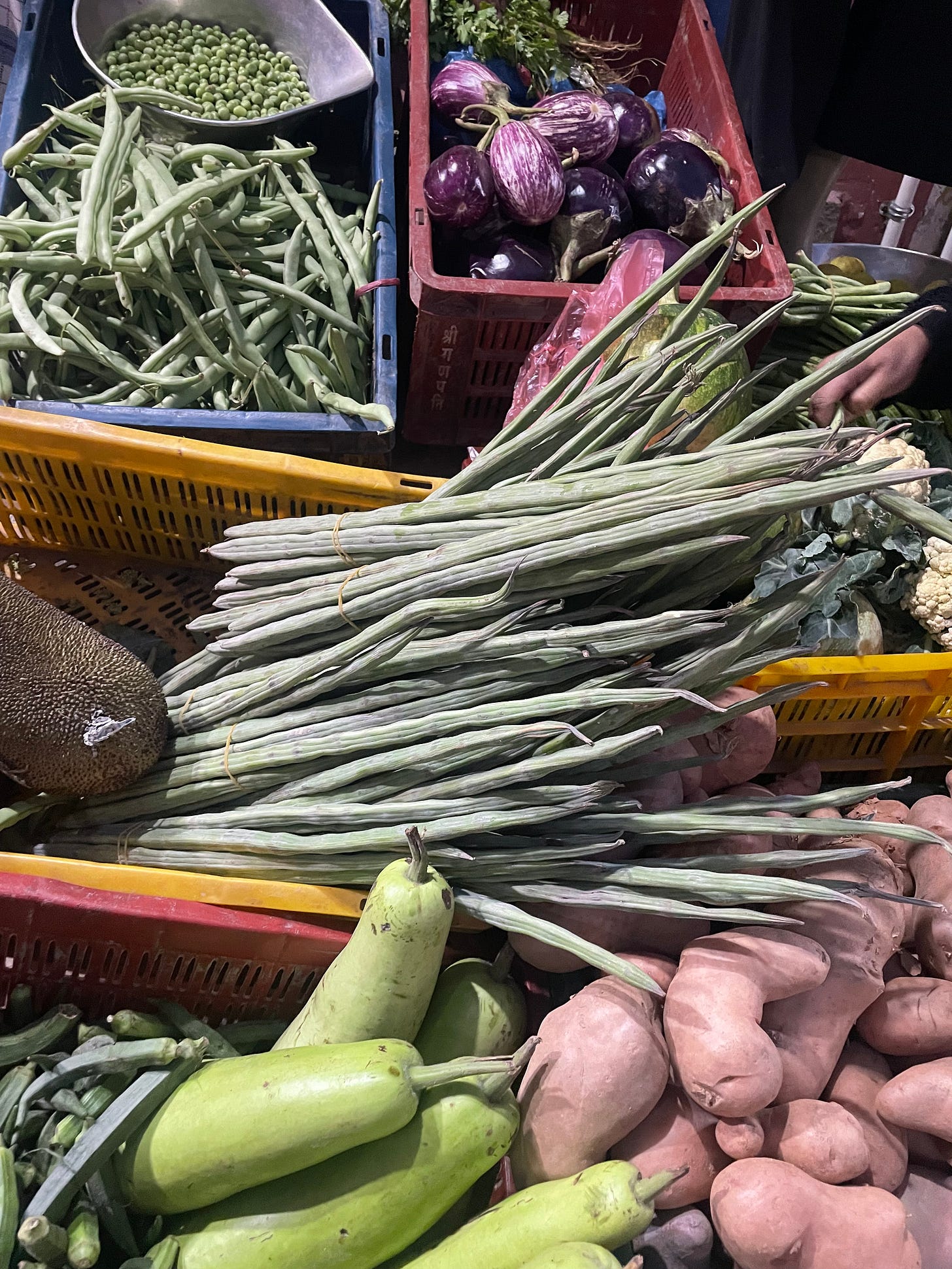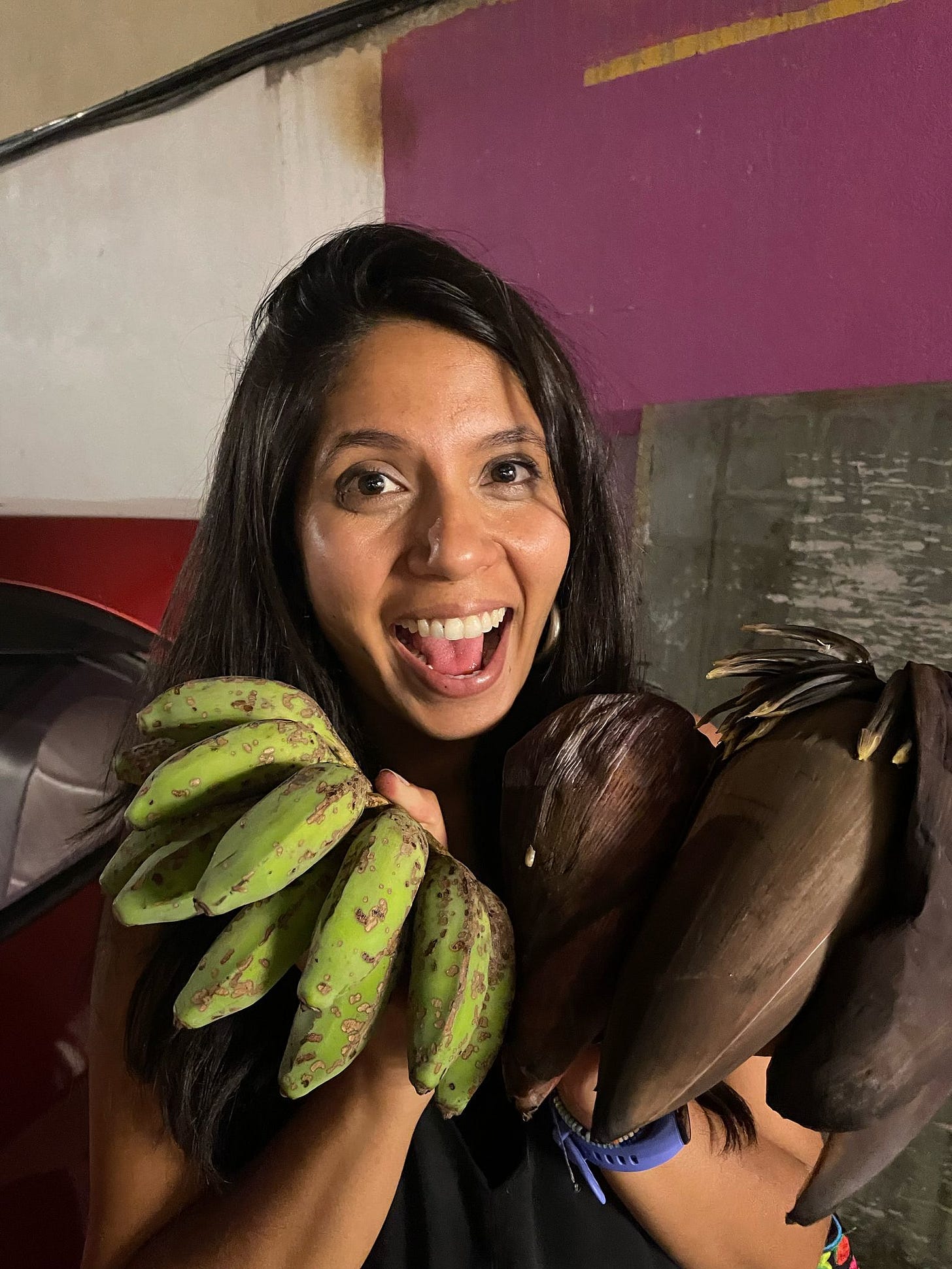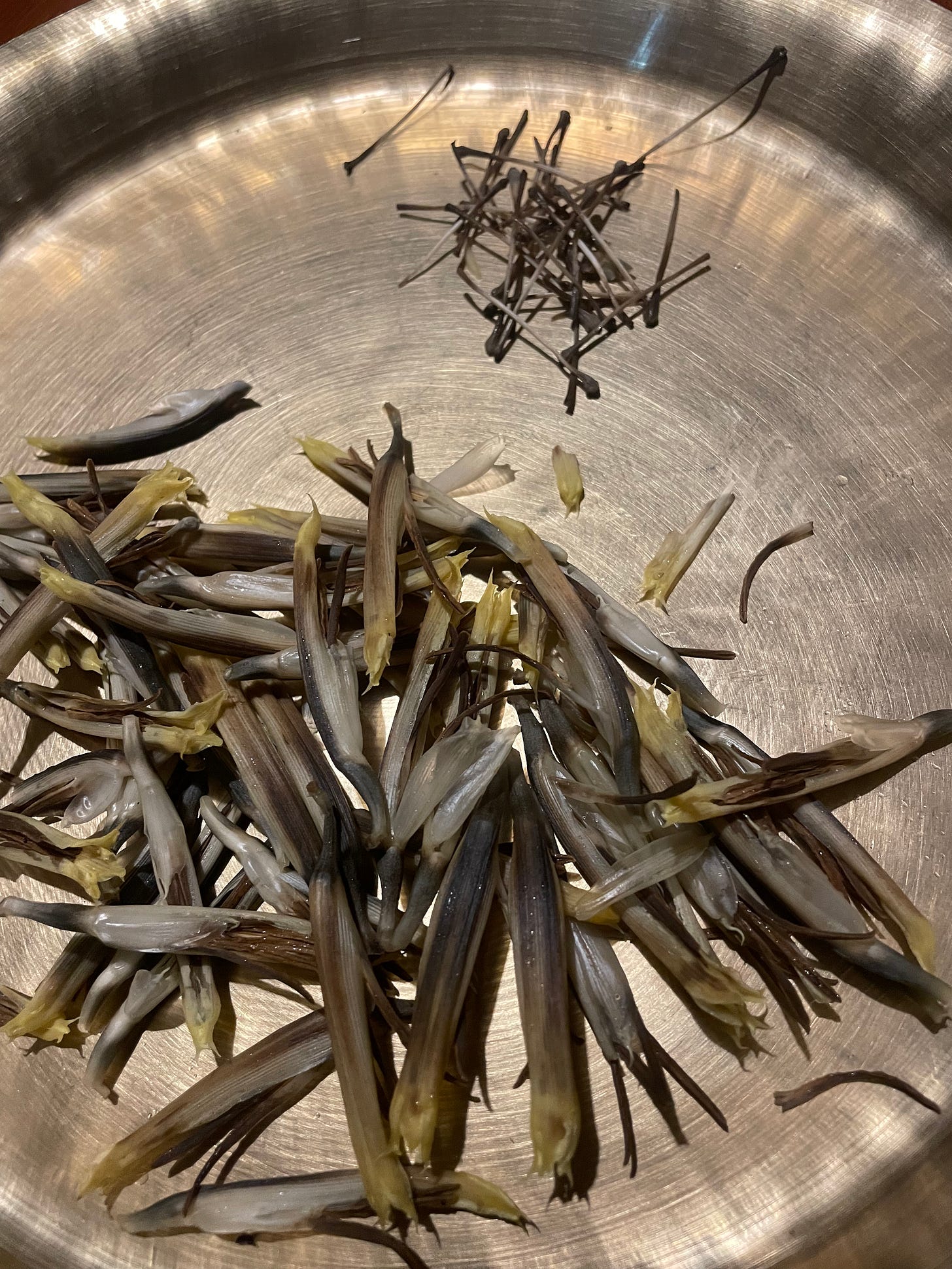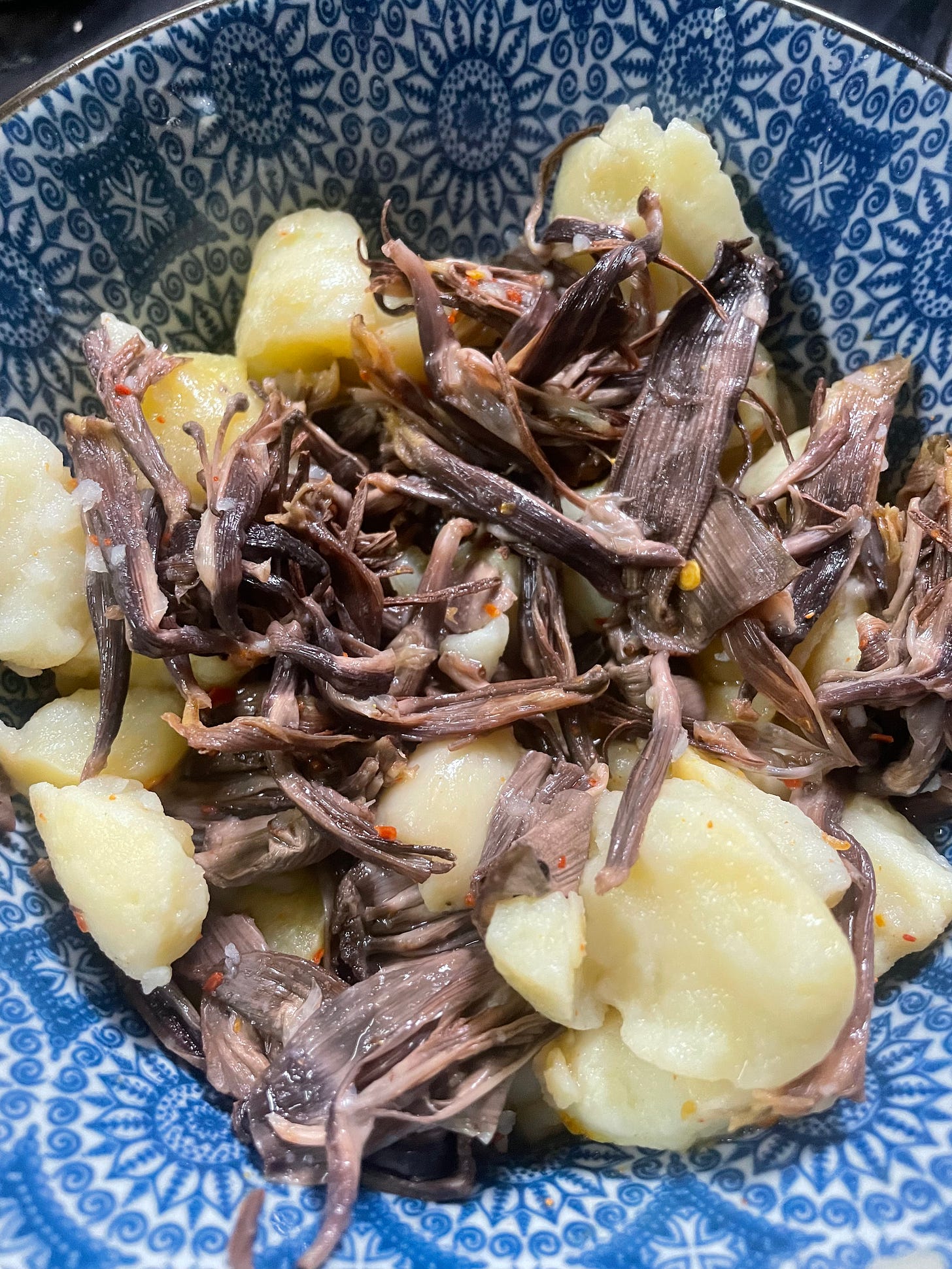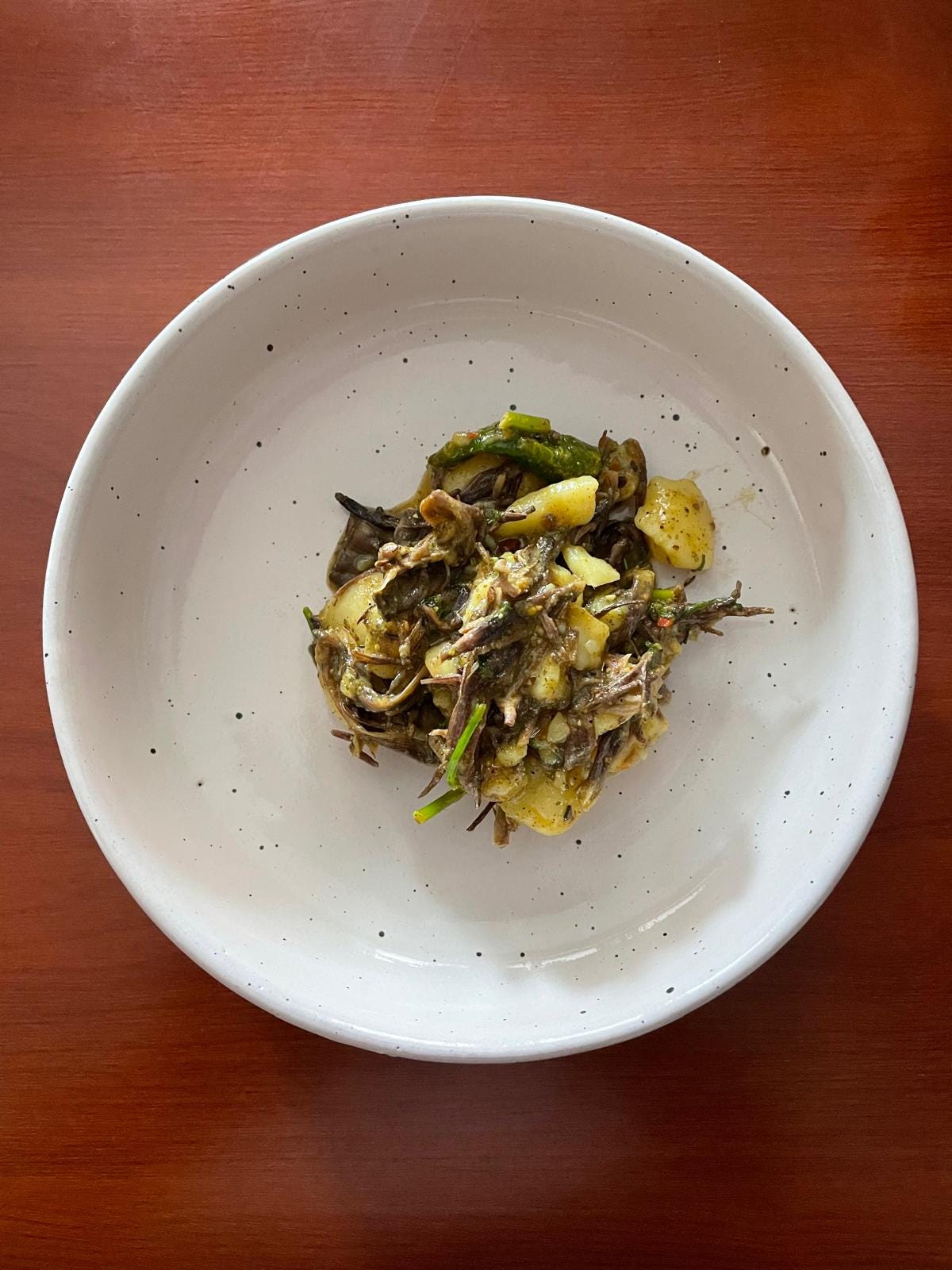Rediscovering moringa, celebrating banana flowers, and honoring Kathmandu’s everyday food heroes
Like a lot of so-called “superfoods,” I didn’t wake up to Soijan’s glory until the Western wellness world woke me up
Namaste from Kathmandu! Welcome to Issue 4 of Dal Bhat Stories! This is a newsletter exploring and celebrating the histories, traditions and personal stories behind Nepali food.
A big THANK YOU to my readers and new paid supporters. Your encouragement means so much to me! Through Dal Bhat Stories, I hope to introduce the world to Nepal’s vibrant and diverse cuisine, help the Nepali diaspora connect with their food heritage, and reshape the conversation around food and nutrition in public health.
The past few weeks have been such a rich food journey for me. I learned new cultural facts about a vegetable I’ve grown up with (story below!), got to experience a super fun and creative South Indian supper club in Kathmandu that celebrated different parts of the banana plant (which inspired me to learn about a Nepali banana flower achaar dish I’d never heard of — recipe below!), and made new connections in the city’s blossoming food scene. Feeling inspired and grateful!
Sajiwan, Soijan, Moringa
Like a lot of so-called “superfoods,” I didn’t wake up to Soijan’s glory until the Western wellness world woke me up. I only learned in the last five years that Soijan is actually moringa. I remember when I worked on my college farm—we grew moringa there and dried the leaves to make powder. At the time, I thought, Wow, I should take this superfood powder back to Nepal and get my health-conscious family on board. And then came the real plot twist: I realized I’ve been eating this thing for as long as I can remember.
When Sajiwan (or Soijan) showed up as the veggie curry with dal bhat, I used to brace myself. I knew it meant a lot of chewing, and a lot of spitting out the tough fibers of the stalk. Honestly, I didn’t get it. Why would we eat something that’s so tedious to eat? But my mom would say it was good for us—like most of the vegetables we ate—and that it reminded her of spending time in the South of Nepal when she was younger. So I tried to complain less. As long as we weren’t eating it too often, I could deal.
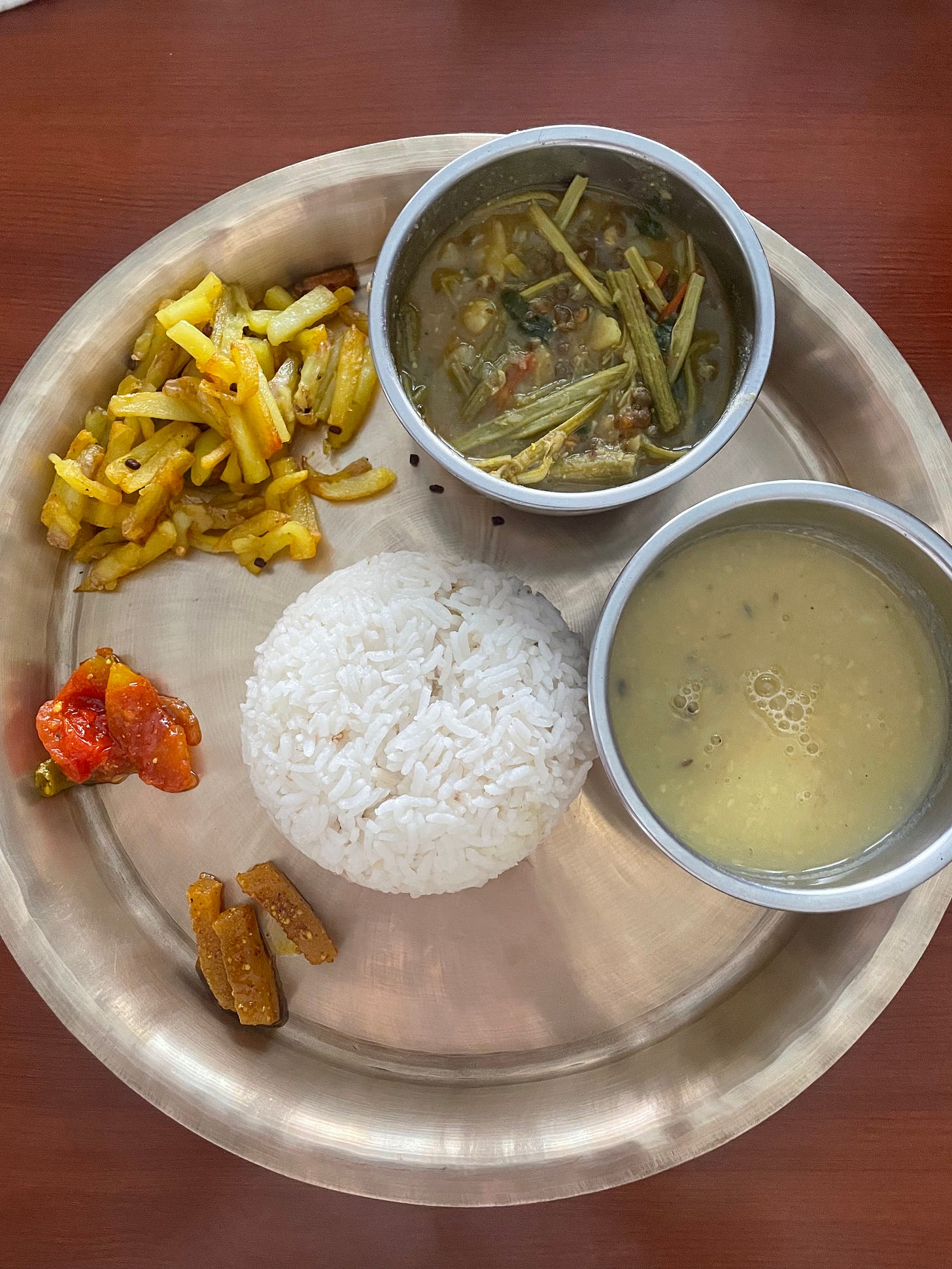
Nepalis have known how to use every part of the moringa plant (except the root) for generations. I’ve recently discovered that we even have a tradition of eating moringa dishes on the first day of Baisakh, the start of the Nepali calendar. Different parts of the plant, different dishes. It was one of those “ohhh” moments I’ve been having a lot more often since I started paying closer attention to Nepali food traditions.
And once again, I’m left humbled. The knowledge our elders carry about the body, nature and nourishment; it’s deep. And it’s often still shared orally, passed down through practice and memory. I haven’t found much online about the traditional uses of moringa in Nepal, but I’m sure it’s out there— in kitchens, in stories, in small moments that haven’t made it to Google yet.
There is plenty out there about the nutritional value of moringa, though. So if you’re curious about that side of things, go ahead and Google away. For me, this is just another reminder of how much we already know and how beautiful it is to keep remembering.
Recipe: Bunga (Banana flower) achaar with hemp seeds
Last week, as a celebration of Nepali Mother’s Day, my family signed up for a supper club called "Banana Plant Odyssey”, which showcased the chef’s South Indian heritage in the ways she used different part of the banana and her use of other ingredients and spices. The dinner was delicious, and the banana flowers that served as centerpieces caught my attention. The chef graciously encouraged me to take it home for me to experiment with, and I obliged. Since we grow bananas in so many part of Nepal, I wondered if we had any traditional recipes with banana flowers, and not to my surprise, banana flowers are used to make achaar with potatoes and ground sesame or hemp seeds in Nepal.
Here is a recipe for you today from my first attempt at making Bunga ko achaar. Enjoy! And next time you stumble upon them, please try it!
Bunga ko Achaar (Banana Flower Relish)
A bold, earthy achaar made from banana flowers and potatoes, dressed in a flavorful mustard oil tempering.
Ingredients:
Banana flowers from 1 large banana blossom
3 medium potatoes, boiled and cubed
Salt, to taste
Juice of 1 lime
Black pepper, to taste
Timmur (Sichuan pepper), to taste
2 tablespoons ground sesame or hemp seed powder
1–2 tablespoons mustard oil (or sesame/avocado oil if mustard oil is not available)
1–2 fresh red chilies, chopped
½ teaspoon fenugreek seeds
Optional: Red chili powder, to taste
Instructions:
Prepare the Banana Flower:
Peel away the tough outer layers (purple bracts) of the banana blossom and compost or discard them.
Collect the small inner florets and the tender heart.
Remove the hard central stem (style) from each floret either before or after boiling, as it's fibrous and bitter.
Boil:
Boil the cleaned banana flower florets and heart in salted water until tender (about 10–15 minutes).
Drain well and let cool. Gently squeeze out excess water if necessary.
Combine:
In a large mixing bowl, mix the boiled banana flowers with the cubed potatoes.
Add salt, lime juice, black pepper, timmur, and ground sesame or hemp seed powder. Mix everything together thoroughly.
Temper the Spices:
Heat 1–2 tablespoons of mustard oil until it starts to smoke lightly.
Add fenugreek seeds and chopped fresh chilies. Let sizzle for a few seconds.
Immediately pour the hot oil and spices over the banana flower mixture.
Add chili powder if desired, and toss well to combine.
Serve:
Taste and adjust seasoning. Serve fresh or let sit for a bit to let the flavors develop.
Local Legends
One of the things I love most about eating in Kathmandu (especially at home) is how fresh everything is. Some vegetables are picked at dawn and delivered straight from the outskirts to the city. By around 7:30 a.m., people like my mom can grab what they need to have a feast ready by 9 a.m., just in time to leave for work.
The street vendors who make this possible and help us carry on our daily food traditions are the local legends of this issue of the newsletter.
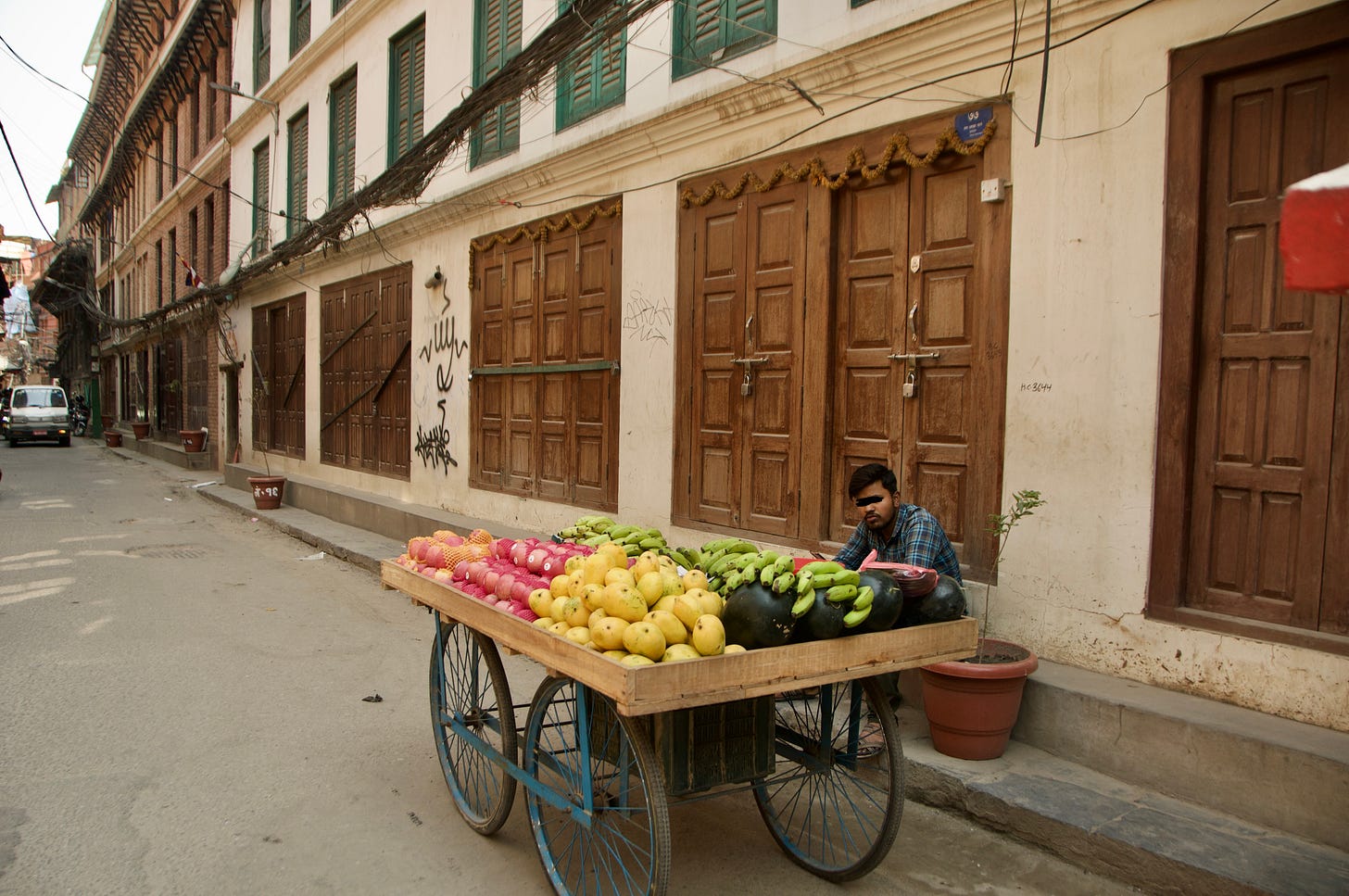
Recently, though, street vending has become a contentious topic. The mayor of Kathmandu announced a ban on street vending as part of a broader city beautification effort. The move received mixed reactions, especially after reports surfaced of police mistreating vendors in the name of "non-compliance," prompting activists to take to the streets in protest.
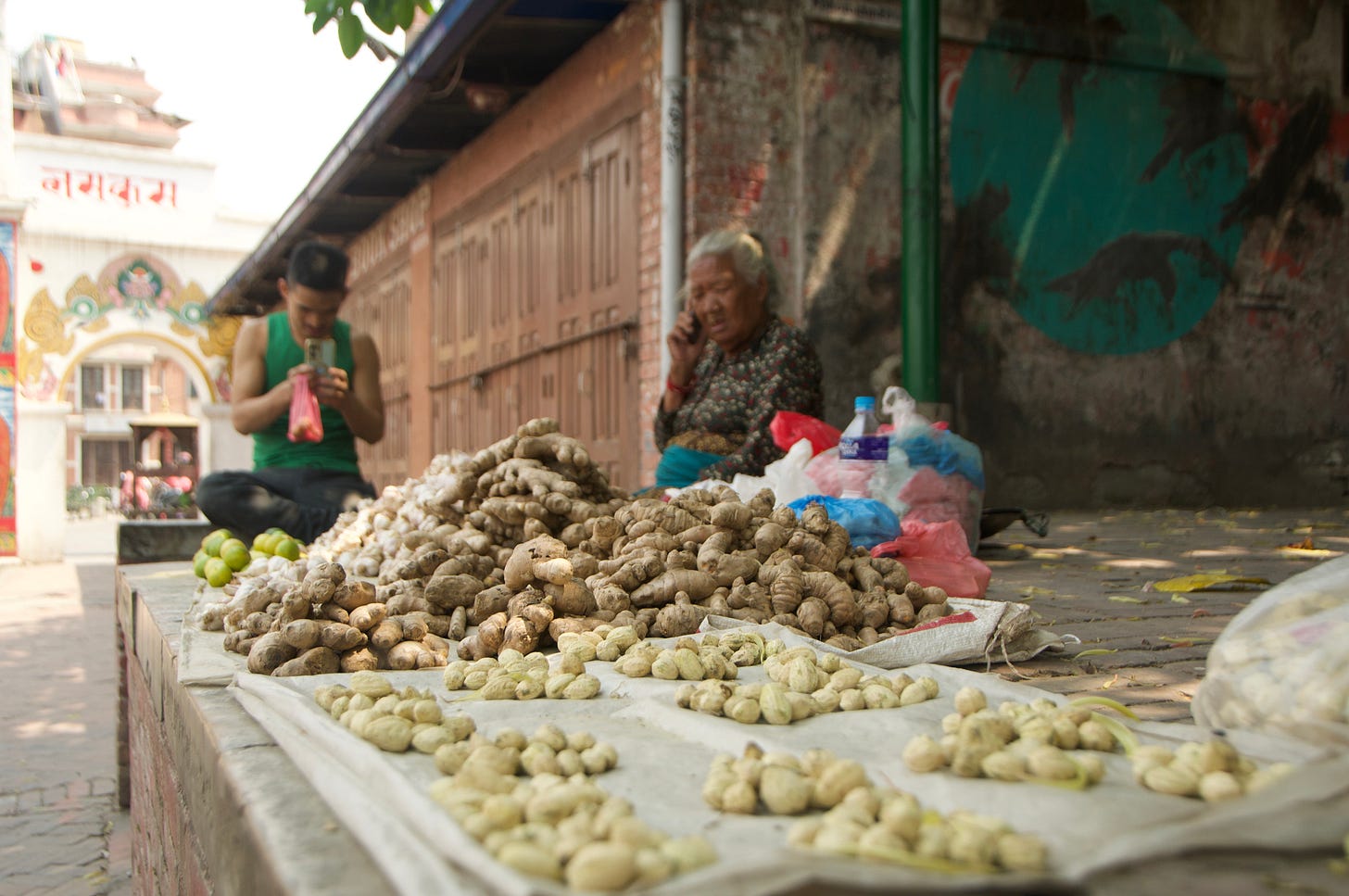
Without getting too rational about it, I just want to say: shopping from street vendors has been one of my favorite parts of living and eating in Kathmandu. Vegetable and fruit street vendors add so much vibrance and color to daily life here.
Okay, fine — here’s my stance: I believe street vending can absolutely coexist with thoughtful road planning, a supportive legal framework, and smart city development. Before these local legends risk disappearing from Kathmandu’s streets, I wanted to honor them with a few photos. As supermarkets pop up on every corner, I hope we don’t lose the small, colorful shops and the people behind them.
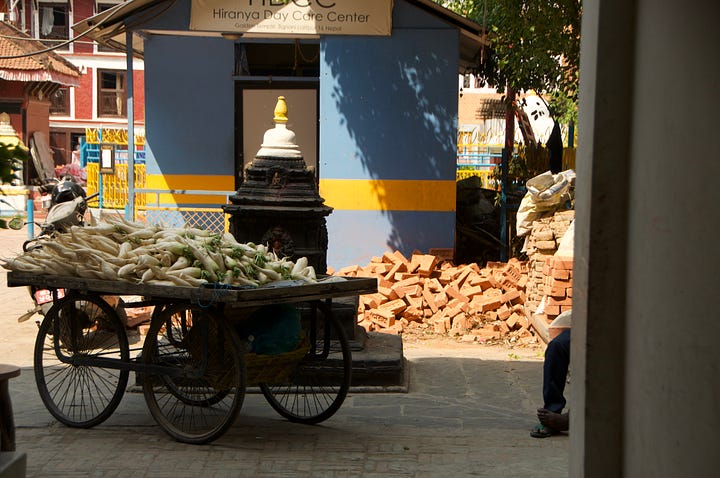
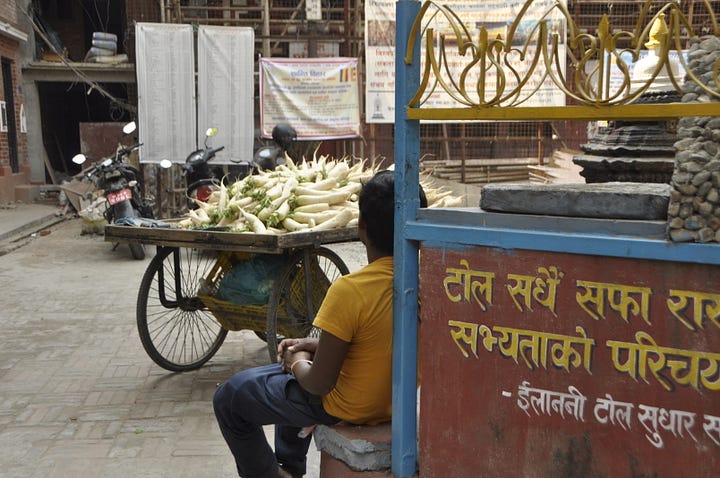
Thank you for your continued support for Dal Bhat Stories!
Is there anything in the world of Nepali food and food traditions that you are curious about? Let me know by leaving a comment.





